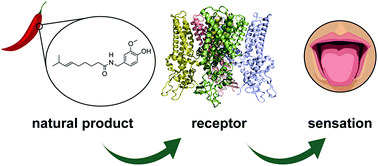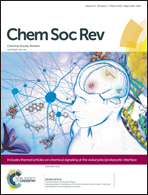Natural product modulators of human sensations and mood: molecular mechanisms and therapeutic potential
Abstract
Humans perceive physical information about the surrounding environment through their senses. This physical information is registered by a collection of highly evolved and finely tuned molecular sensory receptors. A multitude of bioactive, structurally diverse ligands have evolved in nature that bind these molecular receptors. The complex, dynamic interactions between the ligands and the receptors lead to changes in our sensory perception or mood. Here, we review our current knowledge of natural products and their derived analogues that interact specifically with human G protein-coupled receptors, ion channels, and nuclear hormone receptors to modulate the sensations of taste, smell, temperature, pain, and itch, as well as mood and its associated behaviour. We discuss the molecular and structural mechanisms underlying such interactions and highlight cases where subtle differences in natural product chemistry produce drastic changes in functional outcome. We also discuss cases where a single compound triggers complex sensory or behavioural changes in humans through multiple mechanistic targets. Finally, we comment on the therapeutic potential of the reviewed area of research and draw attention to recent technological developments in genomics, metabolomics, and metabolic engineering that allow us to tap the medicinal properties of natural product chemistry without taxing nature.

- This article is part of the themed collection: Chemical signaling at the eukaryotic/prokaryotic interface


 Please wait while we load your content...
Please wait while we load your content...